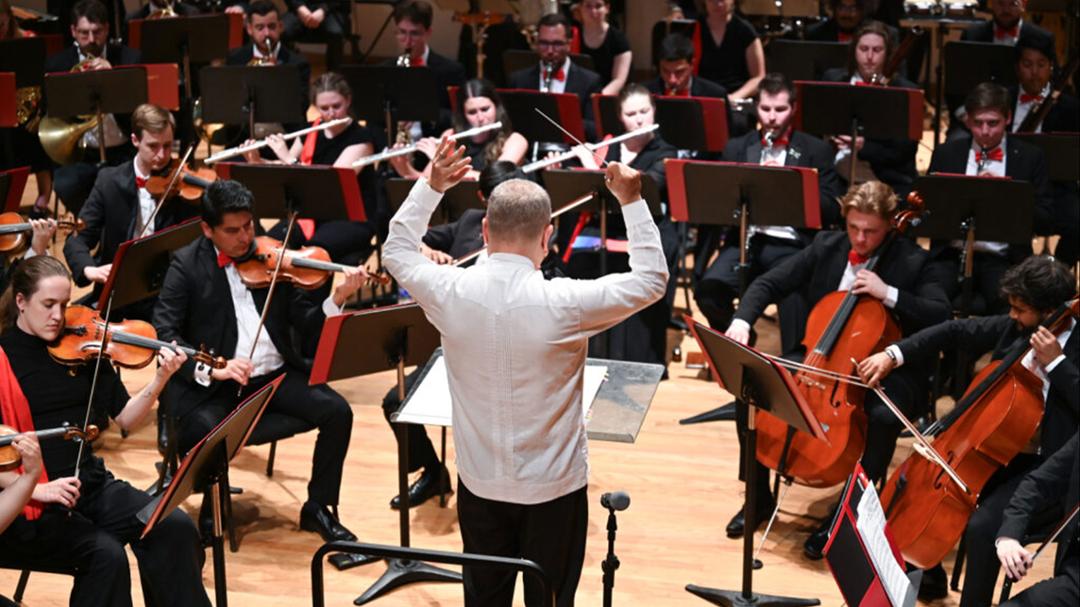One of Texas Tech’s largest ensembles returned to Mexico after 50 years.
“It’s a cliché but music really is the closest we come to a universal language. It crosses borders as effortlessly as a cloud. It nourishes culture like an underground spring. Music has the power to heal, to inspire, to make people weep or jump up and dance for joy.”
– Paul Simon
A few days after the academic year concluded, a new adventure began for 60 Texas Tech University students.
The University Symphony Orchestra departed on a tour through central Mexico, where they spent six days visiting Escuela Superior de Música in Mexico City and Universidad Veracruzana in Xalapa.
The cross-cultural opportunity was dreamed up by J.T. & Margaret Talkington College of Visual & Performing Arts (TCVPA) Dean Martin Camacho, Symphony Orchestra Director Lanfranco Marcelletti Jr., and School of Music Director Andrew Stetson.
“This was a confluence of great minds thinking alike,” Camacho said. “I have professional connections in Mexico City and Lanfranco had similar connections in Xalapa.”
The ensemble left for Mexico on May 14 after a sendoff concert the night before at Texas Tech’s Charles E. Maedgen, Jr. Theatre in the Theatre & Dance Complex. Texas Tech President Lawrence Schovanec was in attendance and offered a few remarks before the performance.
“A world-class education is more fully realized when you have the opportunity to engage in this kind of international experience,” Schovanec said. “This trip will give students a cultural enrichment that’s increasingly important in a globally connected world.”
The Universal Language
Camacho studied piano abroad as an undergraduate student, so he understood how valuable such an experience could be for burgeoning musicians.
“When you travel internationally, you’re confronted with experiences that fulfill you and challenge you,” he said. “It’s not just for the sake of experience; it comes back to nurture your art.”
The benefits of this trip didn’t stop at artistic nurturing alone, though.
“Music truly is borderless; every culture speaks this language,” Stetson said. “That also means there are professional opportunities for musicians in every part of the world.”
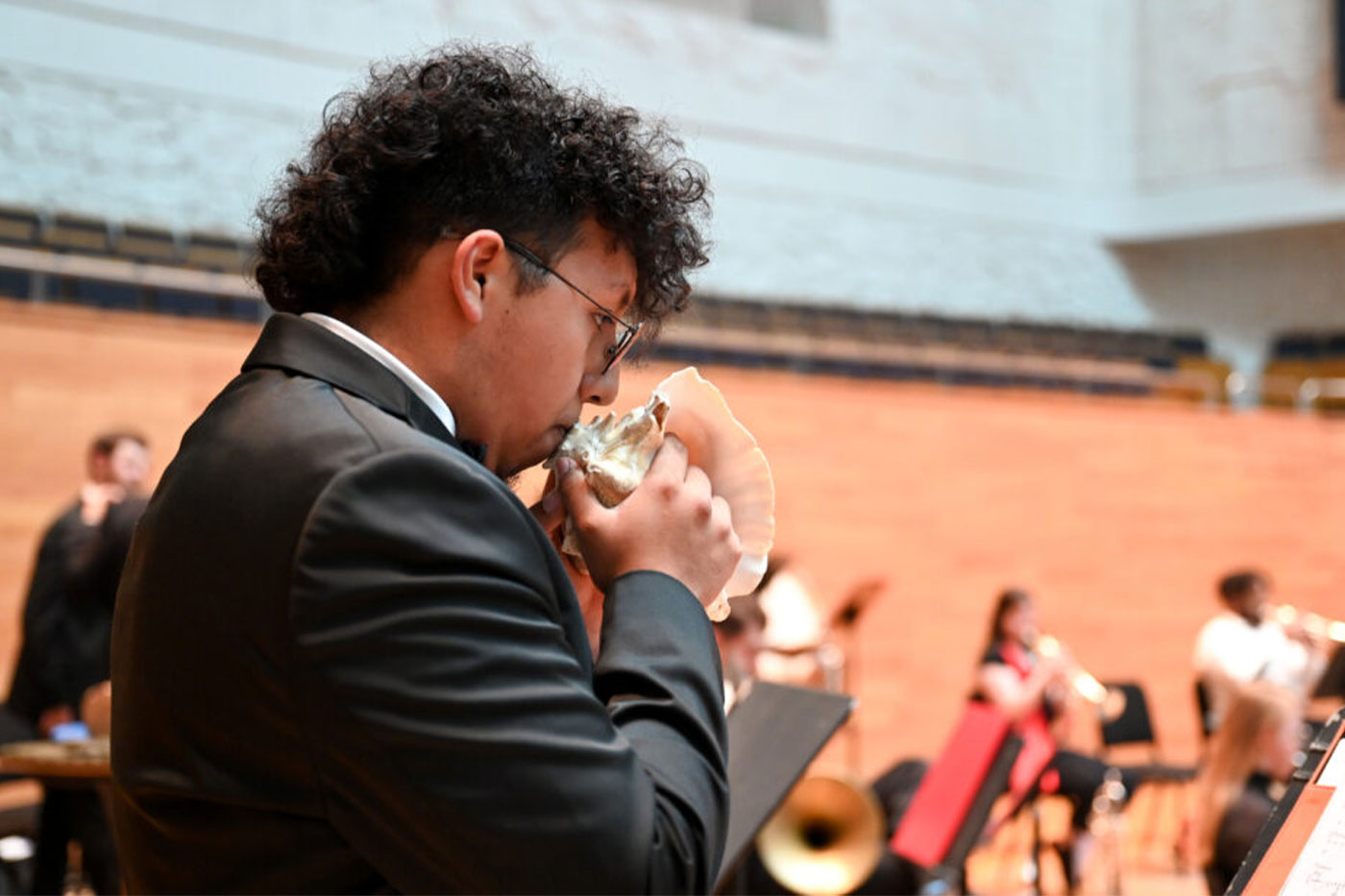
Stetson said it’s part of the school’s job to prepare students to work in various cultures. Due to the competitive nature of certain positions, many young musicians will launch their careers where opportunity lies.
For a musician, that means not only do they need to be at the top of their field musically, they also may need to master two or even three languages. While cross-cultural exposure and scholarship is important in every field of study, it’s nothing short of a necessity in music.
The leadership of TCVPA is dedicated to preparing students for these opportunities. The tour through central Mexico was the most recent investment to that end. And it wasn’t necessarily a new idea, but a revived one. Under the leadership of Paul Ellsworth, the ensemble traveled to Mexico in the 1970s to perform. In the years since, the orchestra had not returned.
There was no particular reason for this as far as faculty and students know; the school likely was just focused on other initiatives. But with an influx of new leadership in the college and Texas Tech becoming a Hispanic-Serving Institution, it was time to revisit the idea.
“When I came to Texas Tech, I learned the symphony had, at one point, traveled to Mexico,” Marcelletti said. “I may be Brazilian, but my heart is Mexican, so I asked Dean Camacho if we could do this again.”
After a scouting trip, Camacho, Marcelletti, and Stetson agreed it was indeed time for the group to return.
The tour’s first stop was Mexico City, where they collaborated with Centro Nacional de las Artes México. The center is the country’s leading institute for arts education.
In addition to performances, eight School of Music faculty members offered masterclasses in the areas of voice, violin, flute, double bass, percussion, classical trumpet and jazz trumpet, and choral music.
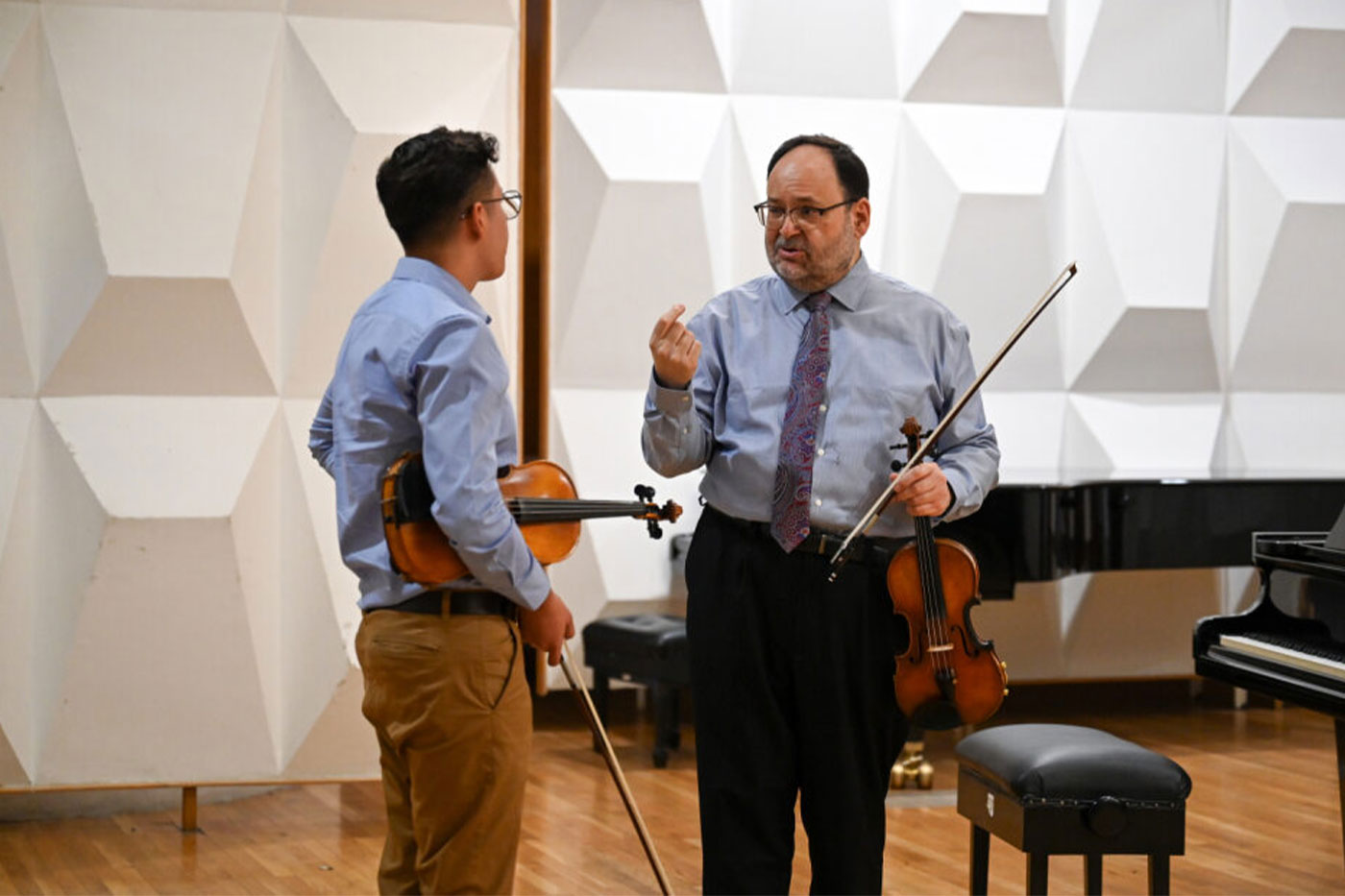
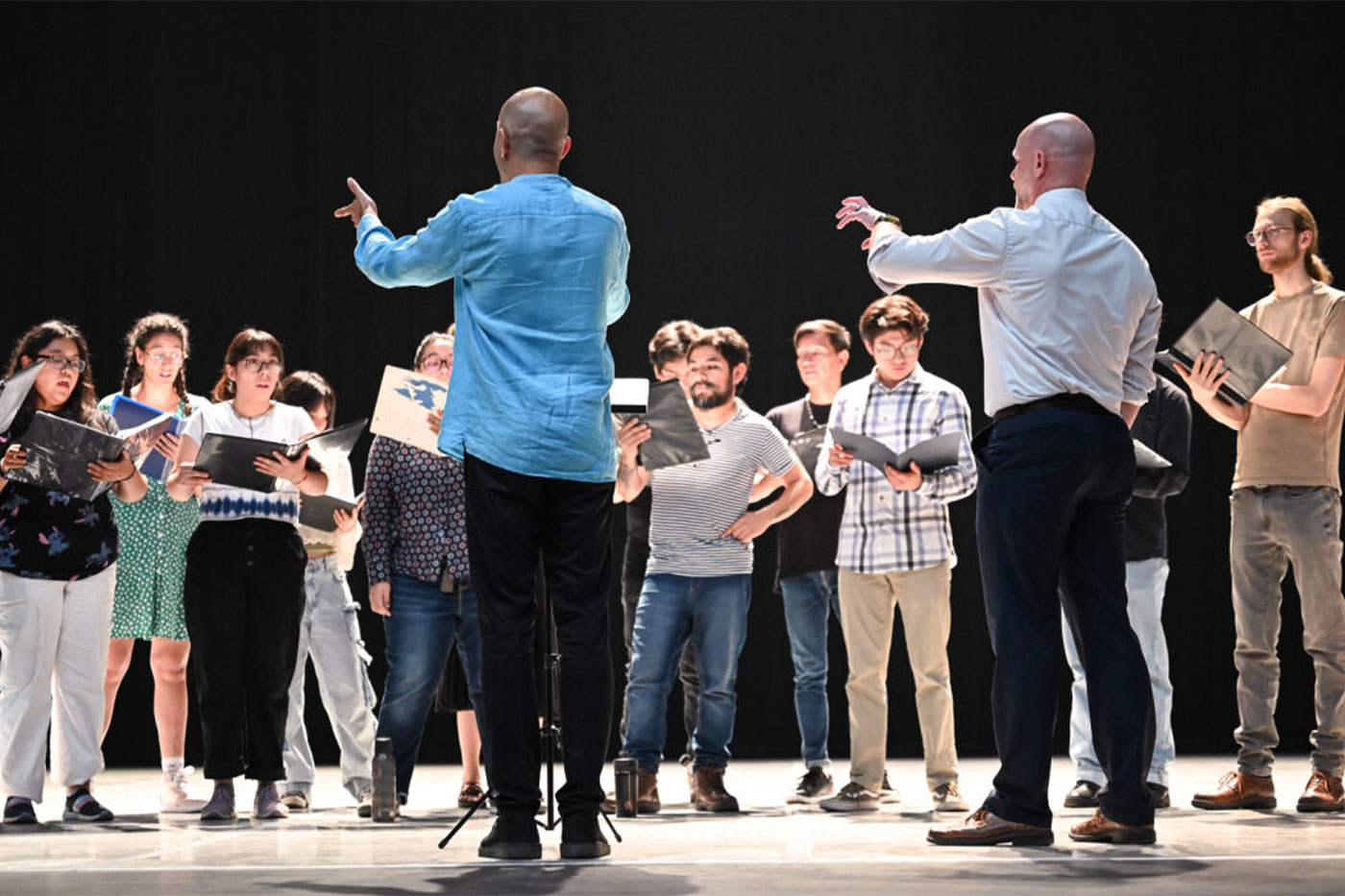
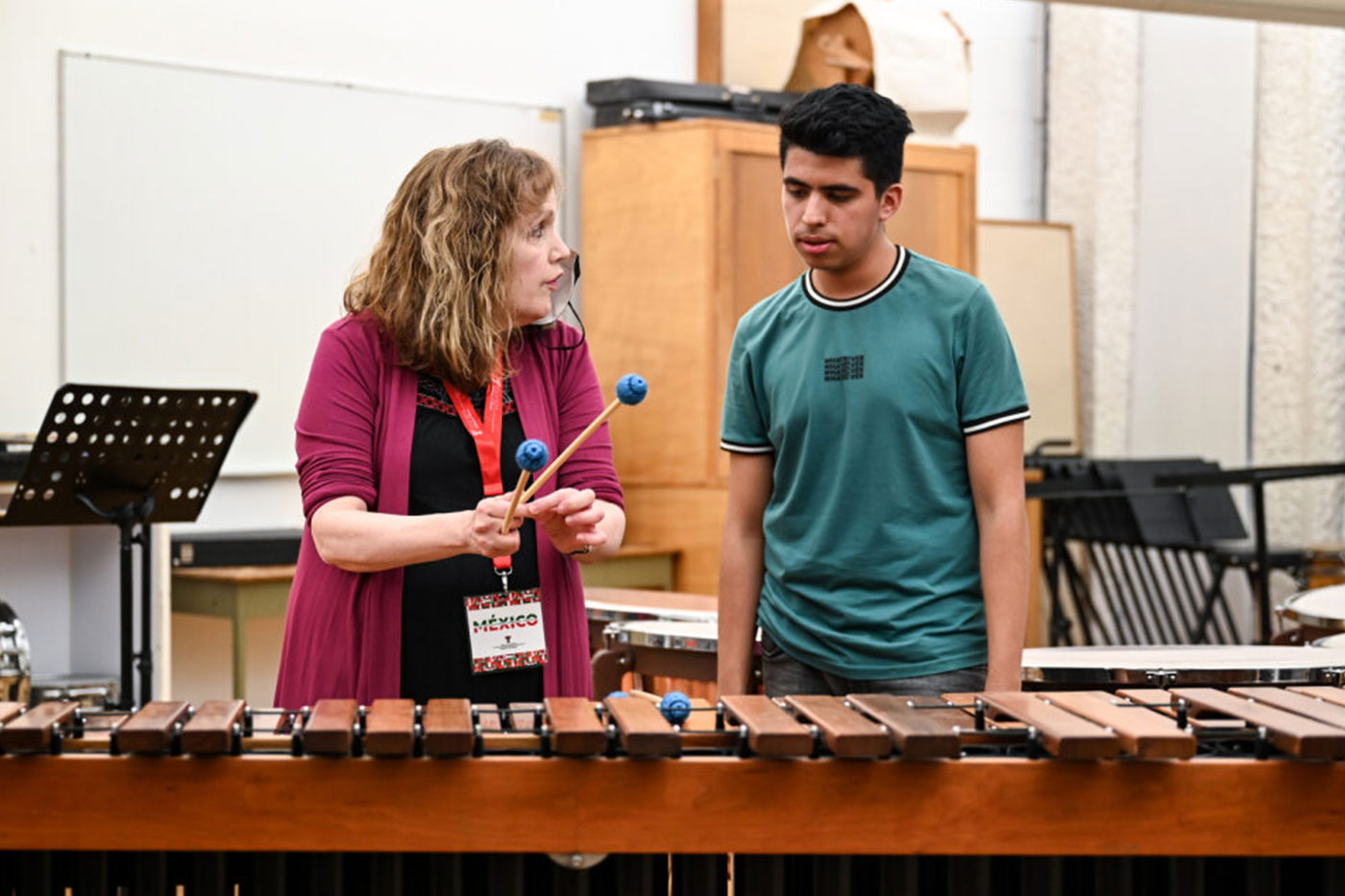
The symphony orchestra performed a free concert to a full hall; roughly 200 people had to be turned away for lack of seating. This was largely due to the media coverage Centro Nacional de las Artes México secured. Texas Tech’s visit received coverage from more than a dozen publications and television stations.
The repertoire chosen showcased both Mexican and American composers. The concert also included composers such as Antonín Dvořák, whose work celebrated folk music and cultural identity.
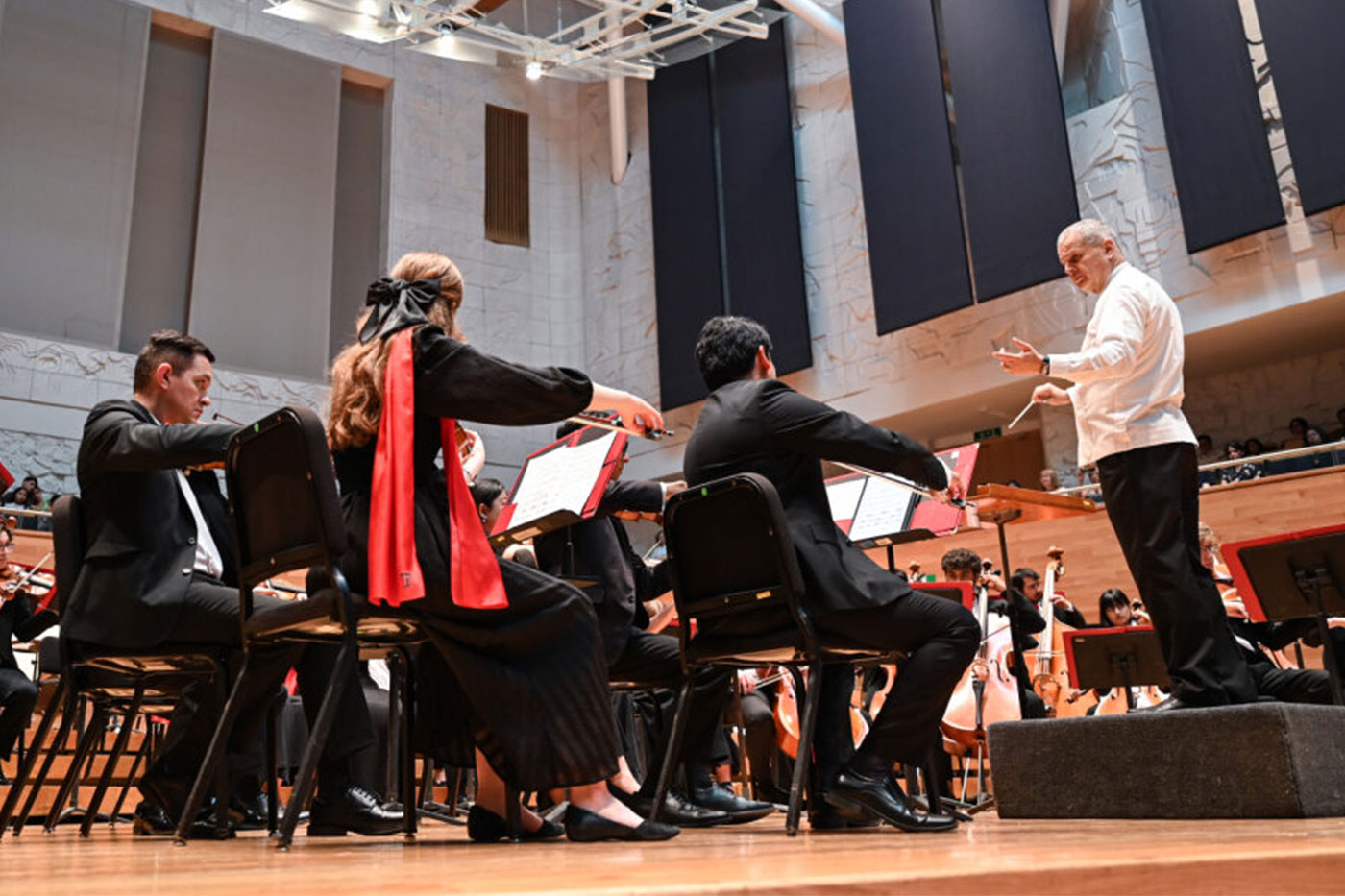
“We chose to prepare ‘La Noche de los Mayas’ composed by Silvestre Revueltas,” said Marcelletti. “In both locations, we had students from those cities join in playing this.”
The suite was originally composed for a film of the same name. While it calls for many instruments, the percussion stands out. The suite includes 12 percussion parts of not only timpani but xylophone, bongos, congas, rattles and countless others, including an instrument made of a grooved gourd. Texas Tech brought four percussionists who were joined by eight in Mexico.
A few other musicians from both host programs joined the ensemble for the week, too.
Connections
At one point in concert, Marcelletti asked students who were Mexican citizens or had Mexican heritage to stand. Roughly 20% of musicians on stage stood up.
One of those students was Josué Molina, a fourth-year clarinet student.
“I have dual citizenship in the U.S. and Mexico,” Molina said.
The musician grew up in San Antonio, regularly visiting Mexico to see family. These trips in combination with learning Spanish in elementary school still left Molina curious to learn more of his heritage.
“That heritage is not something I want to take for granted,” he said.
Molina’s father spearheaded the process for Josué to become a dual citizen while in high school, but now, that continued effort is up to Molina. It’s something he considers himself invested in.
“Not everyone gets to tour internationally, let alone in a country they’re a citizen of,” he said. “That was really cool.”
As Molina stood with other musicians on stage, he recognized looks of excitement in the crowd as applause rang out.
“I think that applause was because there were people on stage that the audience could identify with,” he said. “When you go see an orchestra from another country perform, you’re prepared for a certain level of differentness. But I don’t think that’s what this audience necessarily found.”
Rather, the performances highlighted the commonality between musician and listener.
There is a lot of cultural overlap between parts of Mexico and Southwest Texas. The lines that separate the land are not even 200 years old, younger than some of the music played during the concert.
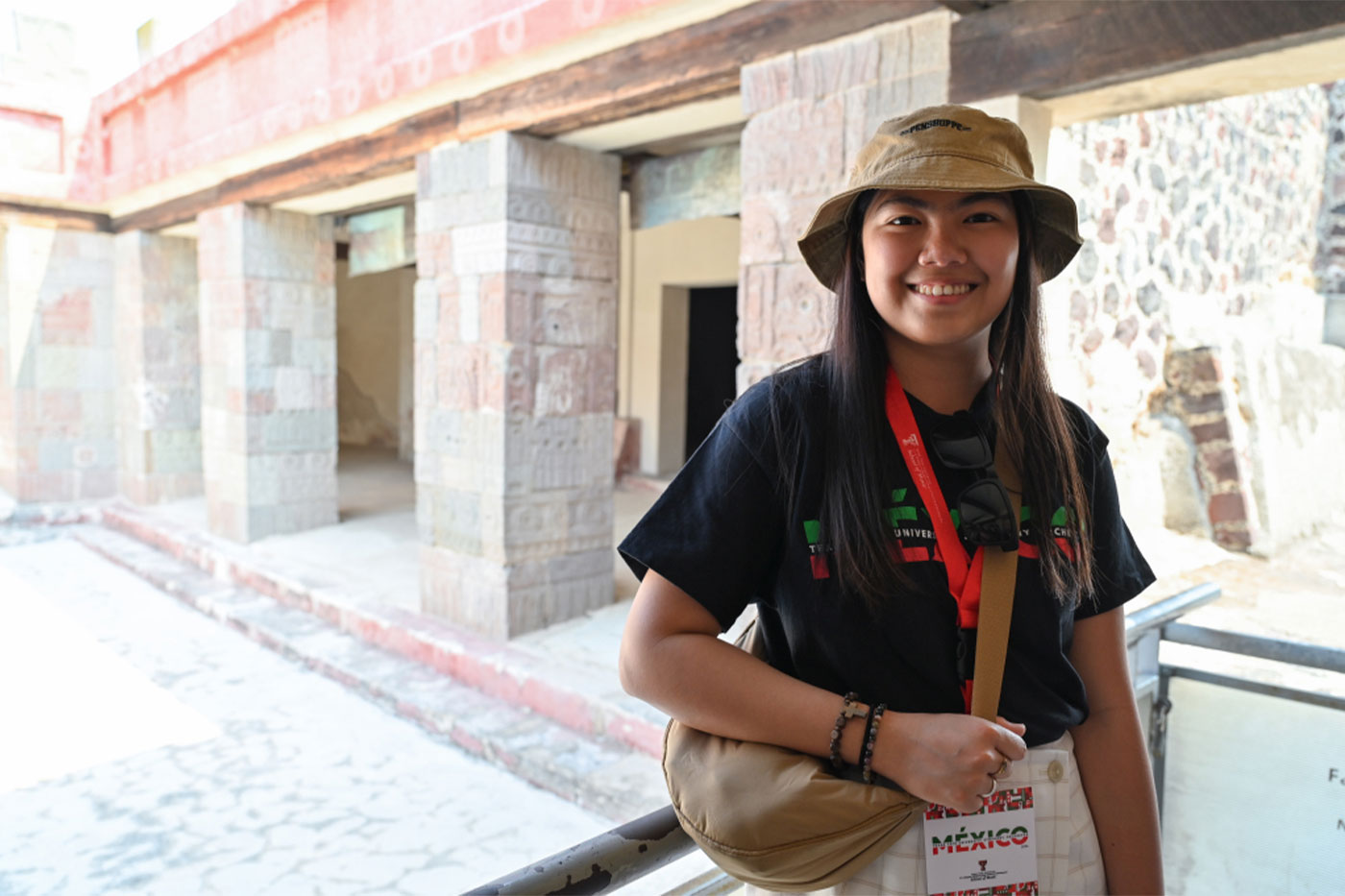
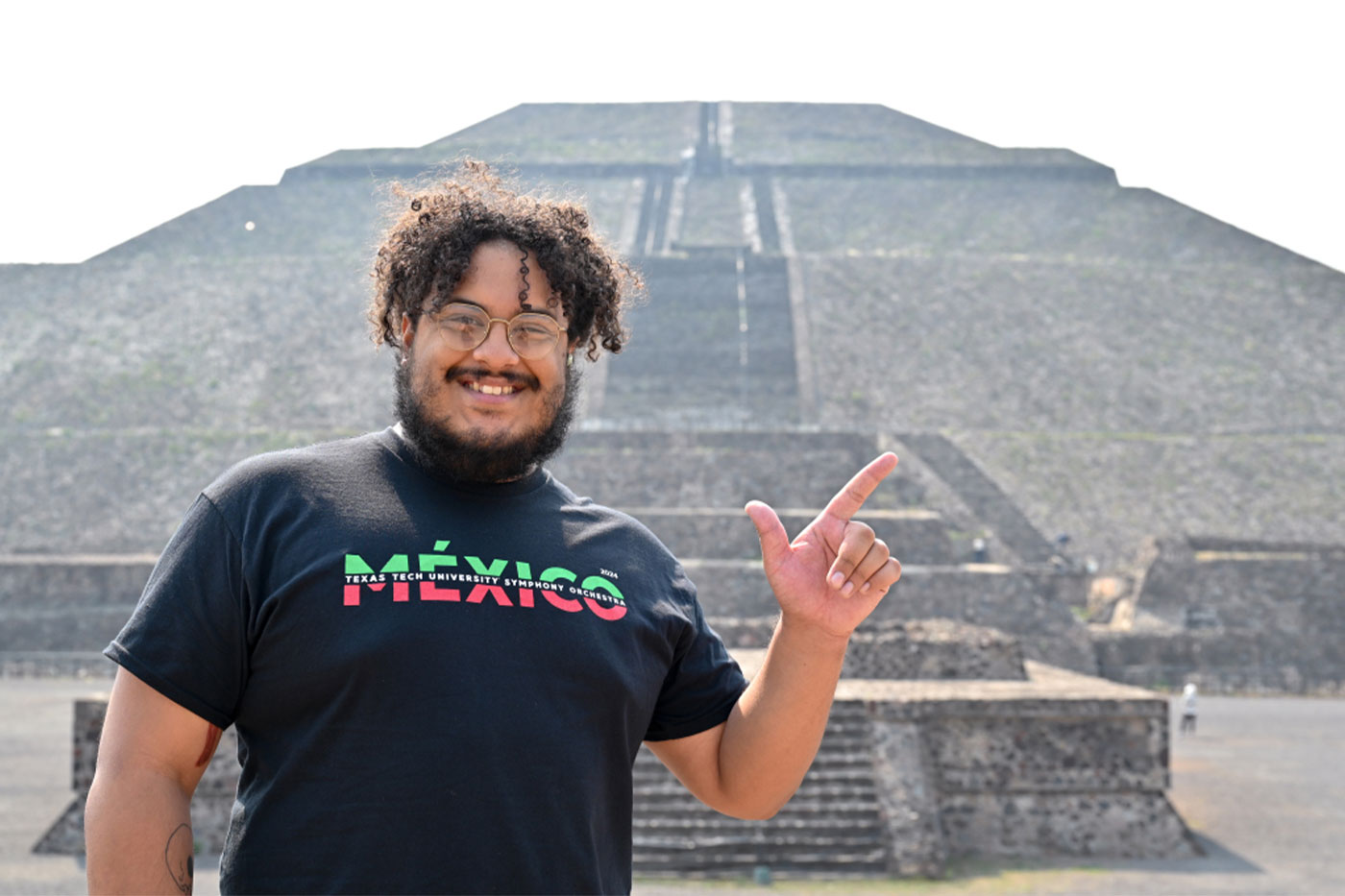
Once the group completed its time in Mexico City, it traveled east to Universidad Veracruzana in Xalapa. Marcelletti conducted the Orquesta Sinfónica de Xalapa for eight years prior to his time at Texas Tech. Bringing Red Raiders to Xalapa was a full-circle moment for the director.
“It was amazing; being able to share something I loved with my students was lovely,” he said. “The people of Xalapa are like my family. It was emotional to share such an important place with the orchestra.”
At the Universidad Veracruzana, as well as in Mexico City, many local students eagerly found ways to be involved from the percussion parts of the Revueltas to an octet.
Both Escuela Superior de Música and Universidad Veracruzana presented strong recruiting opportunities for Texas Tech. Stetson said he and the faculty are hopeful students will remember this experience if they choose to look for graduate programs in the U.S.
The Intangible
Texas Tech students made lasting memories at the Teotihuacan Pyramids, performing in new venues and even visiting Taqueria El Califa de Leon, the food stand that bagged a Michelin Star while the group was visiting.
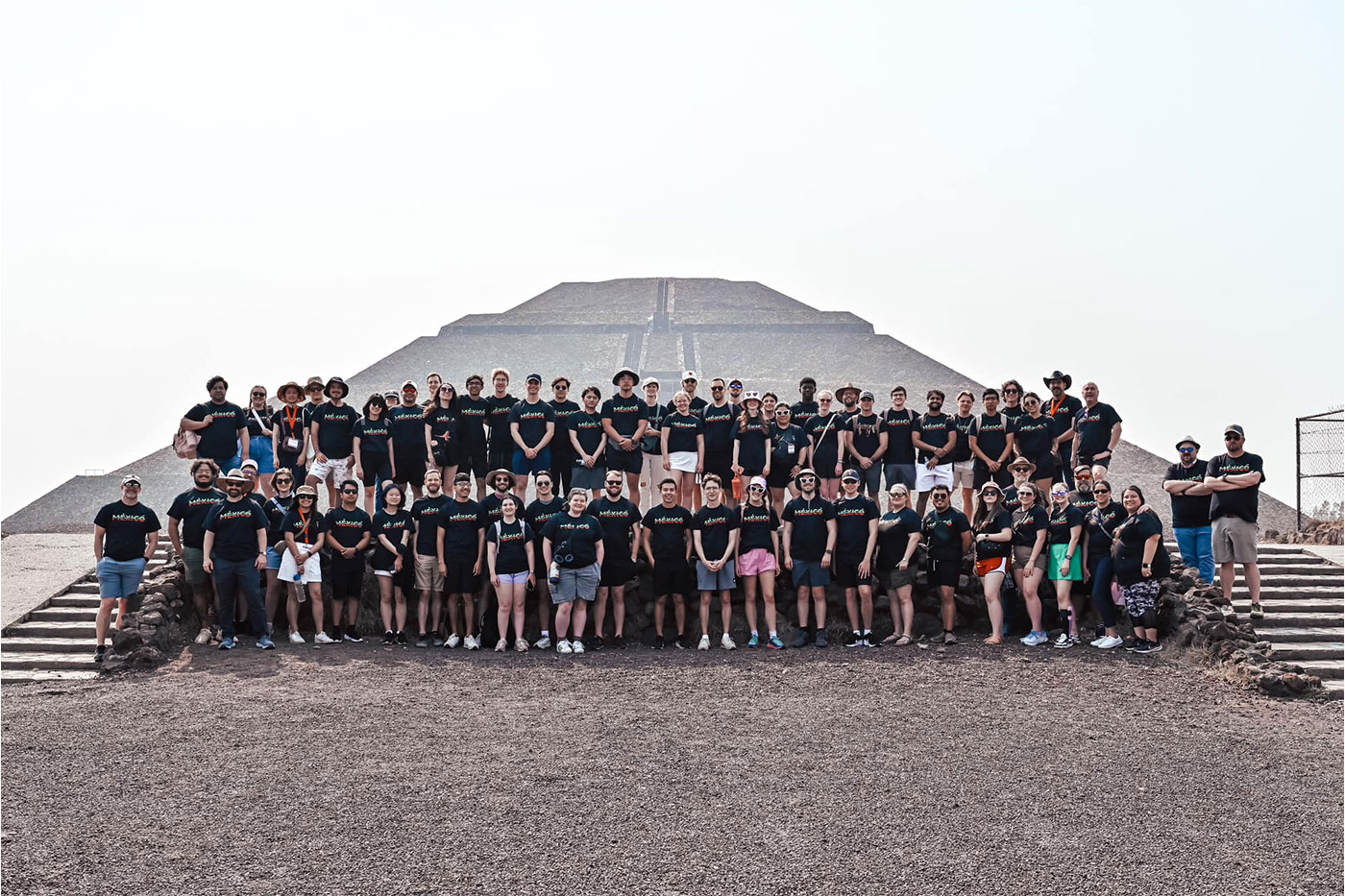
The greatest takeaway though, wasn’t something students could touch, see or taste.
According to concertmaster Anna Kim, it was the intangible energy felt between both U.S. and Mexican students.
“The level of musicianship was amazing,” she said. “I’ll never forget it. The energy was so high, and everyone wanted to rise to meet that. I’ve played with this ensemble for seven years, and I believe it’s the best we’ve ever played.”
Kim is earning a Master of Music in violin performance and has been with the orchestra since her time as an undergraduate.
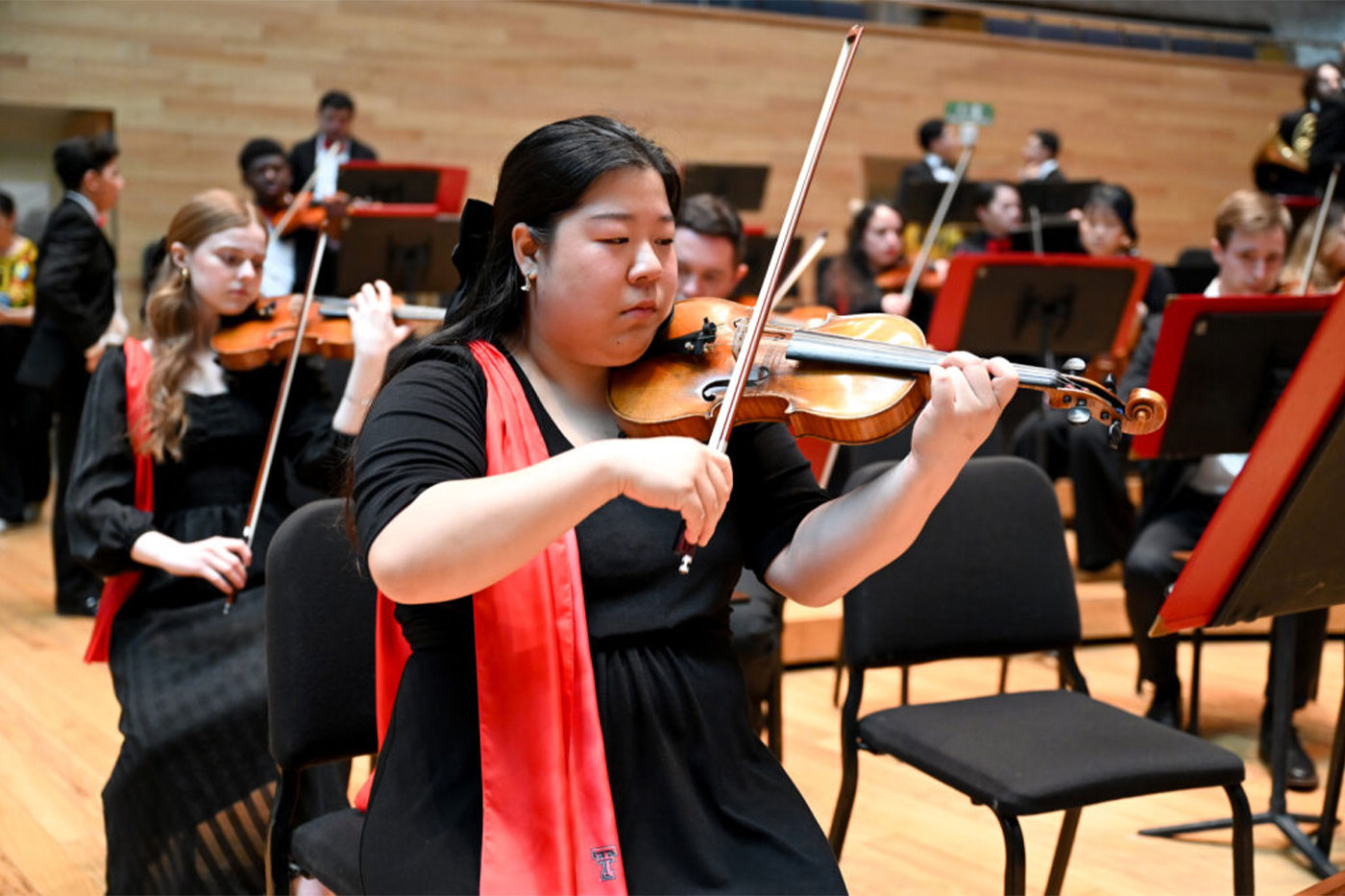
“For the concerts in both Mexico City and Xalapa I was the representing concertmaster,” she said. “I was nervous; we were playing for very large audiences, but they were so welcoming.
“Taking that bow on behalf of our group and on behalf of Texas Tech was the honor of a lifetime.”
The School of Music is scheduled to return to Mexico City this December with a performance from the Texas Tech Opera Theatre.

